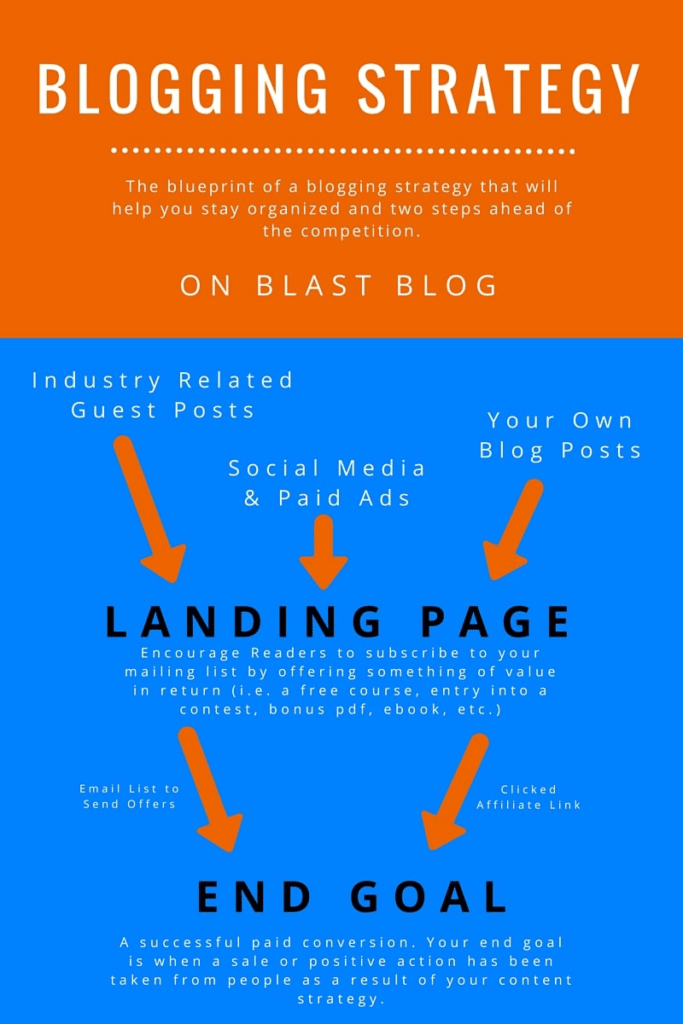I’ve told this story plenty of times, but for those who are just finding my blog for the first time, here it is again: At the start of this year, I decided to take blogging a bit more seriously. I wanted to regularly publish new blog posts every week and use my blog as an outlet for the experiences I encountered. I wanted to help individuals who were wanting to venture into the realm of entrepreneurship and also the executives who were needing to find ways they could develop a solid digital marketing plan that would foster growth initiatives.
As I began my journey into blogging, there were days I felt I could write up to three blogs per day — and then days where I felt less inclined to do so. In the beginning, I was harder on myself and set out a goal to try to publish at least one new blog post a day. In doing so, I started to see the following happen:
- Growth in my website traffic. Let’s be real and honest here, I only had 200-300 people visiting my site a month when I started in January of this year.
- I had Google Adsense on my blog and saw that the revenue continued to grow and come in more consistently every day.
- I’ve grown my email list of subscribers. Truth be told, some of the subscribers don’t necessarily fit my target audience because there are a lot of people just wanting links back to their website or to sell me something. However, the majority are eager aspiring entrepreneurs and marketing professionals who want to learn.
- I’ve seen the time, effort, and money I’ve invested in my blog have over a 600% ROI, which I’ll explain as we dive more into this blog post.
So before we begin, I always love laying some clear stats as to why I believe everyone should be blogging, especially businesses and professionals. Blogging gives you a way to position your expertise, share your experiences, and provide valuable information that builds trust among your target audience. More importantly, blogging can be another revenue stream and also be a very profitable avenue for those willing to be consistent and put in the work.
Here are some clear reasons why you need to start a blog today:
- Businesses that blog experience twice as much website traffic as businesses who don’t.
- 80% of Internet users interact with both social media sites and blogs.
- Companies with blogs produce an average of 67% more leads monthly than companies that don’t blog.
- Blogging is the third most common content marketing strategy, after video and eBooks.
- 70% of people would rather learn about a company through articles rather than advertisements.
- 55% of bloggers say they see results from blog posts with 2,000 words or more.
- Bloggers who invest more time and publish more frequently see better results.

Be Clear With What You Bring to the Table
Find the intersection between what you know you’re going to love doing and what you’re good at. Self-awareness is going to accelerate your path to being successful with your blog.
Being self-aware is something that I take very seriously because it enables me to put my ego aside, be reflective, and really figure out what I’m actually good at. When it comes to entrepreneurship, I know that I have to keep learning and growing. I can’t foresee myself getting to a point where I will be 100% satisfied or complacent. If I do, that just means I’m not really pushing myself or tapping into my fullest potential.

Further, one of the biggest things that has contributed to my progress with my entrepreneurial journey is the fact that I’m 100% accountable for what I take on. In other words, I don’t depend on others to dictate my path. I am constantly paving the way for myself because the vision and goals I put in place for myself are there to fuel my passion for what I do.
Create a Blogging Strategy
It doesn’t matter if you’re in the B2B or B2C arena, the importance of developing content that will resonate with your target audience should be a top priority.
In fact, the most cited blogging goals are:
- 75% want to generate quality leads
- 86% want to build brand awareness
- 79% intend to educate their audience
- 75% expect their content to build credibility and trust
One of the challenges with blogging is that it takes time to see results. You can’t simply publish a blog post today and expect to get an influx of new leads immediately. In order to really make an impact and drive a positive ROI, you have to stay dedicated.
As you lay out your strategy, know that it should be a blueprint to how you will monetize the content you’re producing without sacrificing the value you bring. Here’s an example:

Lay Out Your Goals
Figuring out what you want to achieve and how you will get there is all tied into your overall blogging strategy, but know that laying out actual goals will be even more effective.
Goals don’t have to just be about making money, but they could easily be about the tasks you want to accomplish every single day, week, or month. Either way, these goals should align with how you will reach the big picture plan you have envisioned for yourself.

Have a Revenue Plan
If you’ve read this far, then here’s exactly what you came here for. I’m going to walk you through the exact revenue plan I put in place to generate a 603% ROI with just one blog post. When I started blogging, I knew I wanted to give away the knowledge I had around entrepreneurship and digital marketing. I gave away free content that gave my target audience insight on how they could generate traffic, leads, and sales.
In March, I wrote this blog post: How to Generate Sales with B2B Content Marketing. Shortly after publishing, I then received a new subscriber, who was the CMO of a tech startup, with the following message:
Hi Suttida, very interesting (and well done) recent blog. We should talk at some point.
Unfortunately, right after I received this message, the pandemic was in full force so I had to be patient (which is incredibly hard for me) and then reached back out to this individual in late August. That patience paid off because he then referred me over to the person who was in charge of their digital marketing efforts. Within one week, we signed a contract to work together.
For my blogging efforts, I did invest in having a copyeditor review all of the content before I published, and a copywriter to help me with the initial content ideas. So here’s what the ROI of my blogging has done for me thus far:

Once I take out taxes and some overhead to help run the projects of this contract, my profit margin is still at 67% — not too shabby, right?
Focus on Valuable Content
Analyze what your target audience is searching for and choose topics that align with these searches. More importantly, figure out how to position your blog posts to help alleviate your target audience’s pain points, drive curiosity, and show your expertise — these will all be to your advantage.

Next, write your blog posts based on the lifecycle stages of your target audience to help you see which ones drive the best engagement and why. Remember, not only is it crucial to write around topics that position your expertise but if you write with your target audience top of mind, the ability to generate leads will grow.
Knowing what your audience is looking for can be digital gold for a blogger, so take advantage of research tools that can give you the inside scoop on what matters to your readers.
You can use tools like SEMRush, BuzzSumo, and Google Trends to detect trending topics in a particular niche or industry and tailor your ideas to those trends. These tools look at things like Google searches, social shares, and other data-driven indicators that take the guesswork out of selecting topics. SEMRush even has a content marketing platform that helps you do everything from topic research to creating the post to analyzing the impact after it’s posted.
Wrapping It Up
I’ve covered a LOT of expert tips and strategies that are proven to grow blog traffic. But the most important thing to remember above any methodology is this: focus on the content quality and design it for your readers.
It’s easy to get caught up in SEO and algorithm rules, but remember that those search engines aren’t buying anything from you. When you take care of your readers and serve them with the quality content they came looking for, they’ll be more likely to take care of you in return.
Disclosure: Please note that some of the links above are affiliate links. I only recommend products and services that I use and stand behind, and if you decide to try them, I will earn a commission at no cost to you. Doing so helps me run this blog and provide free content for you, my readers.






2 Responses